why save the bees
The drastic reduction, all around the world, by quantid ...
In order to better understand the importance of pollinators and pollination in agricultural development, O Pollinators Project Brazil, coordinated by the Ministry of the Environment, conducted research and training and awareness activities over the last five years. Housed in an international initiative of the Food and Agriculture Organization - FAO, funded by the Global Fund for the Environment (GEF – Global Environmental Facility) and has the Brazilian Biodiversity Fund - Funbio as Executive Agency, the project concentrates efforts in seven major crops in Brazil: cotton, cashew, canola, chestnut, Apple, melon, and tomato. Management plans, scientific publications, educational and valuable videos were produced to farmers and also to bee breeders.
A global initiative, called "Conservation and Management of Pollinators for Sustainable Agriculture through an Ecosystem Approach" also brings together South Africa, Desire, India, Nepal, Pakistan and Kenya. Approved by the GEF in June 2008, It started in March 2010, lasting 5 years and a more than $ budget 20 million for the Global Project (from the preparation phase to full implementation), of which about US $ 3,5 million for the Brazil.
The organization Bee or not to be has in its objectives guide the bee and beekeeping as essential activities of the agricultural production chain, and therefore established the partnership with Pollinators Project Brazil, to communicate and share these important studies that not only demonstrate the benefits of pollinators, but guide the farmers on management techniques and conservation of pollinators in several crops.
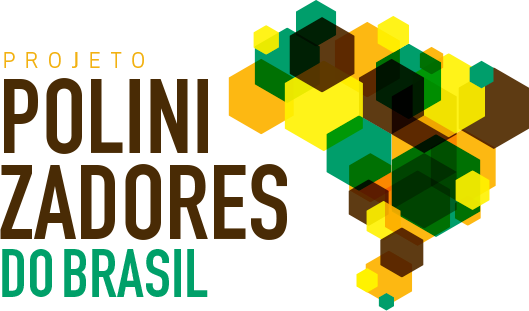
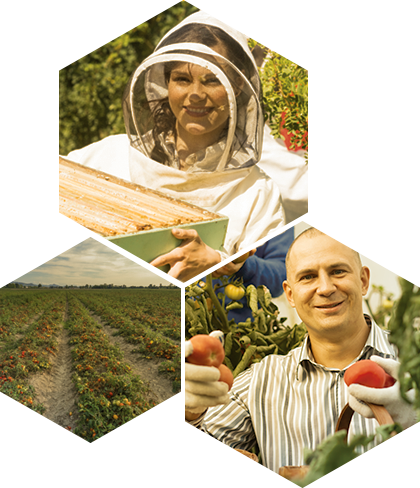
Pollination is the process that ensures the production of fruits and seeds and breeding of various plants, one of the main mechanisms maintenance and promotion of biodiversity on Earth.
For it to happen, come into play pollinators, which are animals such as bees, wasps, butterflies, birds and bats responsible for transferring pollen between the male and female flowers. In some cases, Also the wind and rain perform this role.
Of the known species of flowering plants about 88% rely, at any moment, pollinating animals. More than 3/4 species used by humans for food production depend on pollination for quality production and amount.
The pollinators contribute to the maintenance of our food diversity and quality of life. Without pollinators there is no food.
The Pollinators Project Brazil integrates national institutions in large research networks, with significant results in sustainable management in pollination networks of cultivated plants
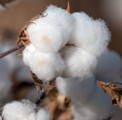
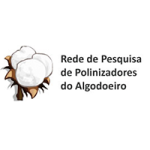
The cotton crop is among the top ten in the world, and Brazil ranks fifth, atrás de China, USA, India and Pakistan. The Midwest, South-Amazon region and the Northeast are the three areas of greatest economic cotton expression, grown in small and large properties. The positive influence of bees is observed both in large and small production areas, with an increased number of seeds, production per hectare and weight of bolls.
The use of hedges with other species such as pigeon pea, cultural practice already in use, may serve as a food source for the bees. These insects are the most frequent and principiais pollinators of cotton. The use of consortia with at least two other cultures, as coriander and peanuts, increases the diversity of insects, which can intensify pollination.
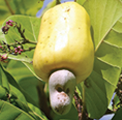
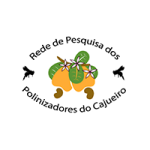
Brazil was the 1st global producer of cashew, and today occupies the 5th position: low productivity is one of the main reasons for the loss of pollination. The average barely reaches one-third of that recorded in the world. Originating in Brazil, cashew was taken by Portuguese settlers to colonies in Africa and Asia and, today, global production exceeds 4 million ton per year. Bees are the main pollinators of cashew cultivation, concentrated in the Northeast, and that is an important source of income for farmers in the region. Honey Bees, stingless, solitary species are important pollinators of cashew in Brazil.
The management plan produced with the support of Pollinators in Brazil project brings together practices that encourage pollination, between them, the choice of areas to no more than 1km of forest reserves (maximum flight distance of most pollinators), and intercropping with other plant species, which increases the diversity of bees. Also, the availability of watering of bees in the dry season, just as the cashew tree blooms and high temperatures jeopardize the bees. The use of trap nests, trunks and branches to nests can increase the population of insects and, with that, strength pollination.
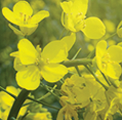
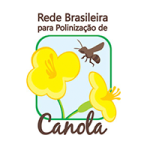
Canola was developed in the 1970 in Canada from the breeding of rapeseed, allowing its use by man (until then, era destinada a consumo animal). Today, over 60 million tonnes per year, It is the third most widely produced oilseed in the world, behind the palm and soya. It is used in cooking oil manufacturing, animal feed and biodiesel. Brazil produces about 60 tons annually, with concentration in Rio Grande do Sul, which is an alternative crop for winter, generating jobs and income. Studies indicate that honey bees can increase productivity by up to 70%, and the consortium with beekeepers generates double benefit: bees pollinate, and canola provides food for the colonies, ensuring honey production.
Publication produced with the support of Pollinators in Brazil project also indicates the presence of native bees can increase the productivity of canola. Among the friendly practices listed pollinators are maintaining forest near the canola crop, prevent fires in areas where bees nest in the ground, provide logs to make nests, using pesticides rationally and plant gardens and orchards surrounding.
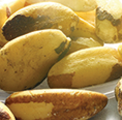
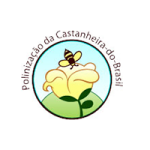
The Castanheira the Brazil, also known as Chestnut-Brazil Nut, It is found in the Brazilian Amazon, and also in Peru, in Bolivia, na Venezuela, in Guyana and Colombia. Almonds are intended for food purposes, and its domestic and international trade is now over 120 years, with 95,8% of production concentrated in the North. It is a product that generates income for extractive people, both grown in agroforestry systems, in partnership with, among others, cocoa, guarana, açaí and cupuaçu, quanto em monoculture, started in the years 1980. Large native bees are the main pollinators of the Castanheira the Brazil and, without pollination, the tree that gets to have up 60 meters not fruits. Although some species are already established in the Northeast, South and Southeast, there are no suitable methodology for the Amazon. That is why, It is essential to consider good practice to keep local populations.
In the management plan produced with the support of Pollinators in Brazil project is recommended to identify the species and location of nests on properties, avoid getting burned, conserve forest areas that can provide food for insects. Also, avoid the use of pesticides and provide the bees trunks and wooden blocks suitable for nests.
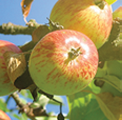
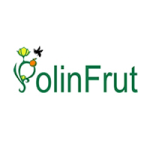
The adaptation of the apple Eve to warmer regions has created a new economic opportunity in the Chapada Diamantina region. Yet, the shortage of native pollinators has a negative impact on quality and quantity of fruit. Participatory Action Plan for the conservation of pollinators in Chapada Diamantina detected that the proper management of pollinators, especially the Africanized honey bee, this reduces deficit. Addition of native social bees along the africanized increases the production of seeds and fruits, indicating the importance of diversity, and that the Africanized bee does not replace exotic native pollinators.
The cultivation of apple Eve in areas with higher temperature enabled the establishment of new producers and poles, today, is the most widely grown variety in Minas Gerais; while Bahia poles (the Chapada Diamantina region) and Pernambuco are considered of great productive and commercial potential in the Northeast, compared to varieties traditionally marketed as 'Gala' and 'Flee', representing 90% Area planted in Brazil. Productivity in the Chapada Diamantina reached 22 ton./ha. in 2012, while in Piedade do Rio Grande (PE) touch 40 ton./ha.
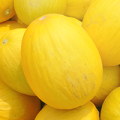

Brazil is the 11th largest producer of melon and, according to data from Embrapa, exports each year 180 tons to countries like Spain, Holland and England. This production is particularly important for the Northeast, where it generates income and employment also among small producers. To ensure the productivity and quality of the crop region, It is fundamental to introduce colonies of honeybees in plantations. When there is low pollination, the fruits are small and deformed.
The management plan produced with the support of Pollinators in Brazil project brings together practices to maximize the services provided by honeybees. Maintaining native vegetation surrounding ensures the food of insects and melon when not in the flowering stage. The application of pesticides to control pests and diseases, as required, It should be done in the late afternoon or evening, since it is what happens in the morning peak for bees. After spraying, the visits of these insects to fall 70%. How they can become aggressive with loud noises and sudden movements, as colsocks must be at least not 300 meters from the passage of people and animals.
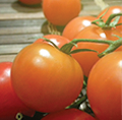
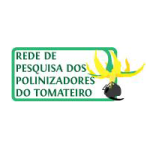
Brazil is the 9th. global producer of tomatoes, with 9 million tons each year. The tomato cultivation is therefore of great economic importance in the country. Goiás, Minas Gerais, Sao Paulo and Rio de Janeiro concentrated 70% production. Tomato plants can autopolinizar, but, with the visit of bees, fruiting may rise 12%, tomatoes weighing up 41% and generate more 11% more seeds. Contamination caused by the indiscriminate use of pesticides decrease the bee population, which results in lower productivity and quality.
The management plan produced with the support of Pollinators in Brazil project identifies the species of bees present in the different biomes where tomatoes are planted, lists that are more efficient and specific needs of each. Only bees that cause vibration are efficient pollinators of tomato. As de mel, for example, They have an important role in this process, no caso dessa cultura. The publication also contains a list of 38 plant species that provide complementary food to bees, and whose planting near the tomato is very important for the management of insects.
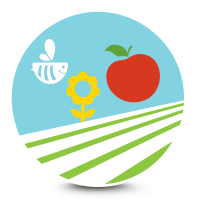 To ensure that the services provided by pollinators continue in agriculture, it is necessary to better understand the factors influencing the populations of these animals. Where there are no pollinators, food safety may be compromised, reducing crop yields, negative effect on the economy.
To ensure that the services provided by pollinators continue in agriculture, it is necessary to better understand the factors influencing the populations of these animals. Where there are no pollinators, food safety may be compromised, reducing crop yields, negative effect on the economy.
It is very important to identify and use sustainable management practices that reduce the negative impacts caused by humans on pollinators, promote the conservation and diversity of native pollinators, and conserve and restore natural areas necessary to optimize pollinator services in agricultural areas.
The results of Pollinators Project Brazil contribute to the awareness of farmers and the general population about the importance of conservation and sustainable use of pollinators to ensure, among other benefits, improving the quality and quantity of agricultural production and economic performance.
 Conserve natural areas, maintaining native vegetation next to the growing area.
Conserve natural areas, maintaining native vegetation next to the growing area.
 Create a direct channel of contact with beekeepers. A Instruction Do joint No.1 MAP (DOU 04/01/2013), It indicates that it is the responsibility of farmers warn beekeepers present in a culture of 6km radius, and 48 hours in advance, on aerial spraying activities.
Create a direct channel of contact with beekeepers. A Instruction Do joint No.1 MAP (DOU 04/01/2013), It indicates that it is the responsibility of farmers warn beekeepers present in a culture of 6km radius, and 48 hours in advance, on aerial spraying activities.
The drastic reduction, all around the world, by quantid ...
Freebee: How bees can help raise food security of ...
In Brazil, It created the project "Pollinators d ...
Preserve and encourage the presence of polinizadore ...